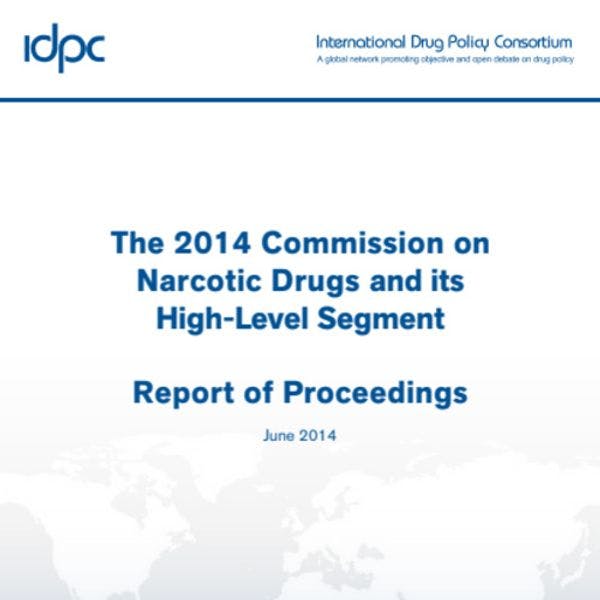2014年麻醉药品委员会及其高级别会议:会议记录报告
这个报告提供了今年讨论的内容摘要并试图提供对于关键互连性的讨论的一些分析,争论以及新兴关心的问题和在麻醉药品委员会上反复出现的问题。 英文版本拥有更多信息,请阅读下文。
通过订阅IDPC每月警报,随时掌握与药物政策发展相关的最新信息。
This year’s 57th Commission on Narcotic Drugs (CND) took place between 13th and 21st March, and included a High-Level Segment (HLS) like that featured at the 2009 Commission, and was intended as a mid-term review of progress made towards the realisation of the Political Declaration and Plan Action agreed in 2009, and to map the path to the 2016 United Nations General Assembly Special Session (UNGASS) on the world drug problem. The HLS, following lengthy and often heated discussions, produced a Joint Ministerial Statement (JMS). This statement proved difficult to achieve, with disputes over the use of the death penalty for drugs offences forming the heart of wide-ranging philosophical and political differences. The passages intended to deal with the forthcoming UNGASS were abandoned and included instead in the work of the regular CND, which was left to come up with a resolution accommodating the conflicting positions.
Overall, the outcomes of this year’s events were mixed, reflecting the increasingly complex, and often paradoxical, state of international drug control. It was certainly positive that the important relationship between health, human rights and drug policy was the focus of genuine discussion and that civil society engagement remained largely constructive. Moreover, in terms of open calls for reform of the existing treaty architecture, 2014 broke new ground. On the flip side, however, despite apparent realignment of the treaty system towards the ‘health and welfare of mankind’ the WHO remains marginalised. Moreover, countering increasing calls for reform, many states are set to steadfastly defend the status quo and maintain the separation of human rights and drug policy; a point demonstrated by different country positions on the death penalty in the JMS. As this highlighted, it is clear that the mythical ‘Vienna Consensus’ on drug policy is now irreparably shattered. As we approach the 2016 UNGASS, what is less clear is how the international community will deal with increasing policy pluralism.
This report aims to provide a summary of what was discussed at the HLS and the CND’s 57th session, including at various side events, and attempts to provide some analysis of the key interconnected discussions, debates, emerging issues of concern and recurring themes with which observers of past CNDs will be familiar.
The report is available below in English, with its executive summary also available in Spanish.
Keep up-to-date with drug policy developments by subscribing to the IDPC Monthly Alert.
Previous reports in this series:
- IDPC report of proceedings: The 2013 Commission on Narcotic Drugs
- IDPC report of proceedings: The 2012 Commission on Narcotic Drugs
- IDPC report of proceedings: The 2011 Commission on Narcotic Drugs
- IDPC report of proceedings: The 2010 Commission on Narcotic Drugs
- IDPC report of proceedings: The 2009 Commission on Narcotic Drugs
- IDPC report of proceedings: The 2008 Commission on Narcotic Drugs
- IDPC report of proceedings: The 2007 Commission on Narcotic Drugs
Topics
- 2016 UNGASS
- UN drug conventions
- Supply reduction
- Regulated drug markets
- Prisons & incarceration
- Human rights
- HIV/AIDS
- Harm reduction
- Drug law reform
- Demand reduction
- Cultivation of crops deemed illicit
- Criminal justice
- Civil society engagement
- Access to controlled medicines
- Health & harm reduction
- Decriminalisation, legal regulation & reform
- Development & environment
- Violence, policing & punishment
- Human rights and social justice
Regions
Related Profiles
- International Drug Policy Consortium (IDPC)
